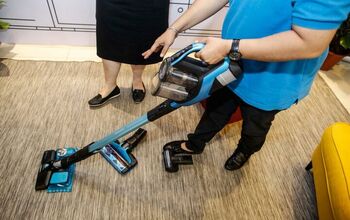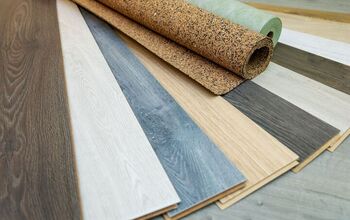Can You Use Carpet Cleaner On A Couch?

Sometimes spot cleaning your couch just doesn’t do the job. Every so often, you need to show your couch some love and give it a thorough deep clean. While this is not a chore you need to undertake often, it can still feel like a daunting task. It would make sense then, that you might wonder if you can use your carpet cleaner to help you deep clean your couch.
You can absolutely use a carpet cleaner on most couches. Before you grab the carpet cleaner, however, verify what type of cleaning methods your couch can handle. In preparation for couch cleaning with a carpet cleaner, make sure you thoroughly vacuum up any dirt and debris off the fabric, to minimize filter clogging. Select the correct upholstery cleaner and use the upholstery attachment on your carpet cleaner.
You can certainly use the upholstery attachment on your carpet cleaner to assist you in deep cleaning your couch. While this can greatly improve the cleaning results, and cut down on the difficulty of the task itself, there are still several important steps to follow. In fact, before you even think about using the carpet cleaner, you first need to prepare the couch for cleaning.
Prepare Your Couch For Cleaning
Before you use a carpet cleaner on your couch there are a few steps you should take first. You need to make sure your couch is cleaned and treated as much as possible before you run the carpet cleaner over it. These preparation steps will ensure best results and prevent damage to your machine.
Remove Cushions And Vacuum Couch
It is critical that you vacuum the entire couch and its upholstery before you use a carpet cleaner. Couches have a way of collecting dirt, dust, and crumbs. You want to make sure the surface is free of these. If there is too much dirt, the carpet cleaner will be less effective. You are also more likely to clog up the filter in the machine. This decreases suction and will require frequent cleaning if you clean over an un-vacuumed surface.
Inspect The Surfaces
Once you vacuum your couch, you should inspect the surfaces. During this process, you are looking for any caked-on dirt or noticeable stains. If you find any, make a note of their location.
Spot Treat Where Necessary
Once you have inspected your couch, you should go back to any areas with stains and do a preliminary cleaning. Use a gentle scrub brush and a stain treatment that will not hurt your upholstery, if you are unsure what type of product to use, you can always use the same product you put in the carpet cleaner. The idea here is to give extra attention to stained areas. After all, the carpet cleaner might be able to clean your couch, but it is not going to work miracles.
Confirm The Cleaner Is Compatible With Couch Upholstery
Read And Understand The Cleaning Tag On Your Couch
The majority of couches have a tag somewhere (either on the couch or a cushion) that gives detailed instructions or a code as to how you can clean it. If the couch has detailed instructions, follow them. If you only see one or two letters to describe the cleaning method, see the key below to understand what these letters mean as far as cleaning.
W – This means that you can use water-based and foam agents to clean your couch. These are perfect couches to use a carpet cleaner on. Only use distilled water, as tap might have minerals that can damage fabric.
S – You should only use very mild cleaners, no water. This means you should not use a carpet cleaner on this type of couch
W/S – This means you can use water-based or non-water based cleaners.
X – Only vacuuming and very light brushing is allowed. You should not use dry or water-based cleaners on this type of couch.
Confirm Your Couch Material Can Get Wet
Some couches will not have detailed instructions or any tag. This is often the case with couches caught second hand, specifically antiques. These couches may have even been re-upholstered. For these circumstances, it is important to research the material, and know if it can get wet. Some fabrics ( suede, leather, other animal products) are sensitive to many water-based cleaners. Temperature may affect dye in the fabrics as well, so always use a cooler cleaner if you are uncertain of the material’s origin.
Is The Fabric Sensitive To Any Cleaners?
Your couch will have a tag that gives you some guidance, but it still may be sensitive to certain cleaners. Bleach is an obvious example, but other less-impactful cleaners can still damage certain fabrics and colors. If you have any doubts, simply test a small (and hardly noticeable area). Work the cleaner in and allow it to dry. If you see positive results you can rest assured you are using the right solution.
Step By Step Guide To Cleaning Couch With Carpet Cleaner
Step One: Prepare Your Upholstery Cleaner Solution
Once you confirm you have chosen the right cleaning solution, mix it with the appropriate amount of water. For most cleaners, 16 ones of upholstery cleaner mixed with a gallon of water is the right ratio, but make sure you follow the instructions on your specific bottle. Before filling the tank to the proper level, make sure your filters are rinsed and clean.
Step Two: Connect And Test Your Upholstery Attachment
There is likely a process of attaching and re-routing involved when it comes to using the upholstery/hose attachment to your carpet cleaner. This can be a several step process. If you are at all unsure, consult your product guide for instructions. Just the power to make sure the suction and solution sprayer are both functioning properly.
Step Three: Clean The Couch With The Carpet Cleaner
Using the hose and upholstery attachment, slowly work the device over your couch. For best results, pull, don’t push. Pulling allows for best coverage and suction. Long slow strokes work best. If you find too much solution is being released, let go of the solution trigger and work the vacuum over the extra liquid.
Release the solution trigger an inch or two before the edge of each pass to prevent solution spillage. Maintain full coverage as you pass the tool along the upholstery to prevent missed spots or uneven cleaning. Remember that foam is a good thing. Foam creates a soapy cleaning solution but prevents the moisture from reaching too far into your couch.
Step Four: Inspect Results And Repeat When Necessary
Once you have gone over the entire couch, allow it to dry. Once the couch is dry look at the entire couch and the cushions. If you missed a spot, or notice some uneven lines due to improper cleaning, feel free to repeat the cleaning on that area. Remember that deep stains may require a special solution or professional cleaning.
Four Tips To A Successful Couch Cleaning
1. Don’t Rush The Job
The most important thing to remember when you clean your couch using a carpet cleaner (or any machine) is not to rush the job. Take your time and use long slow pulls. This allows the cleaner to use all its power to clean and suction every inch of your couch.
2. Provide Ventilation
The drying process is also very important. The last thing you want is a couch that stays wet for days. This can even cause mildew and mold. Use fans and if you have an air conditioner or dehumidifier, it might be a good idea to have these on to facilitate the drying process.
3. Clean On A Mild Dry Day
In addition to ventilation, do your best to deep clean your couch on a dry and pleasant day. This will further promote a swift drying time.
4. Periodically Clean Filter(s)
As you clean your couch, the filter will eventually get a bit clogged with fibers and debris. If you notice a decrease in suction, stop the machine and clean the filter. Periodically cleaning out the filter will ensure your machine is operating at its highest capacity.
Wrapping Up Using Carpet Cleaner On Couch
You can certainly use a carpet cleaner to clean your couch. As long as your carpet cleaner has an upholstery attachment and your couch can be cleaned using waterbed cleaners, you should have very few obstacles. Before you fire up the carpet cleaner, however, check your couch’s tag to verify what type of cleaning it suggests, and make sure you vacuum the couch thoroughly before you start the cleaning process.

Tom Gaffey is an expert writer who currently resides in Washington D.C. Tom has a passion for real estate and home improvement writing, as well as travel and lifestyle writing. He lived the last twelve years in Hawaii where he worked closely with luxury resorts and event planners, mastering his knowledge of aesthetics and luxury products. This is where he found his passion for home improvement and a keen interest in DIY projects. Currently, Tom resides in Washington D.C, and also working on his debut fiction novel.
More by Tom Gaffey



























